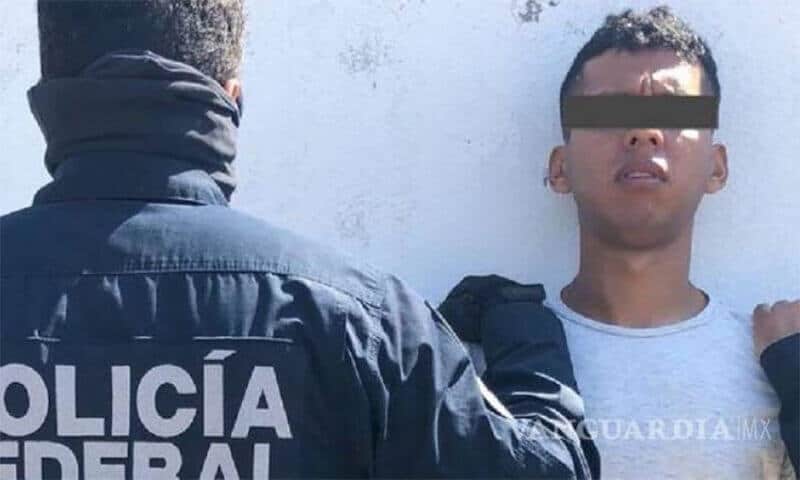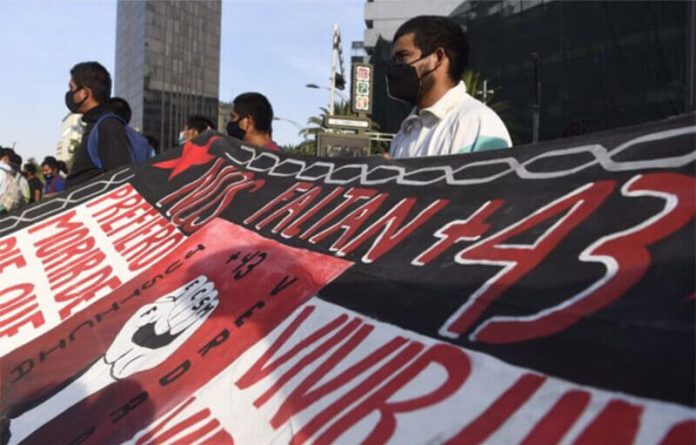Videos showing suspects in the case of the 43 missing students being tortured will support a criminal case against ex-officials who allegedly fabricated the former government’s official version of events about what happened to the young men.
The now-defunct Center for Investigation and National Security made 40 recordings of officials subjecting suspects to torture, according to a report by the newspaper Milenio.
The recordings were made between October 2014 and January 2015 – the first four months after the Ayotzinapa rural teachers college students disappeared in Iguala, Guerrero, on September 26, 2014.
Government sources told Milenio that the videos are part of a file compiled by the Special Investigation and Litigation Unit for the Ayotzinapa case, a division of the federal Attorney General’s Office.
The file documents “massive and systematic manipulation” of evidence in order to fabricate the previous government’s so-called “historical truth,” officials said.

First proffered by former attorney general Jesús Murillo Karam at a press conference in January 2015, the “historical truth” contended that the students, traveling on a bus they commandeered to go to a protest in Mexico City, were intercepted by corrupt municipal police who handed them over to members of the Guerreros Unidos crime gang who subsequently killed them, burned their bodies in a dump in the municipality of Cocula and disposed of their remains in a nearby river.
The current federal government has rejected its predecessor’s version of events and launched a new investigation.
According to the sources who spoke with Milenio, the purpose of torturing suspects was not to extract factual information from them. Instead, it was used to break the suspects down intellectually and emotionally so they would become “repeaters” of the version of events concocted by Murillo and Tomás Zerón, former head of the now-defunct Criminal Investigation Agency.
Zerón, whom Mexico is trying to extradite from Israel, anti-kidnapping unit chief Gualberto Ramírez, other officials of the Attorney General’s Office (known at the time as the PGR) and security force members are seen torturing suspects in the 40 videos, officials told Milenio. Lawyers for the suspects also appear in the footage.
The Special Investigation and Litigation Unit’s file includes an expert international analysis that determined that Zerón’s voice is audible in some of the videos.
The file also contains evidence that the PGR and other former law enforcement officials staged crime scenes, fabricated supposed proof, destroyed and discarded evidence, failed to follow some lines of investigation and were generally negligent in their work.
Milenio reported that the 40 videos are part of an “arsenal of evidence” that the Special Investigation and Litigation Unit will use to support criminal complaints against the officials involved. The FGR believes they were part of a coordinated network aiding the construction of the official version of events, government sources said.
The Ayotzinapa unit, headed up by special prosecutor Omar Gómez Trejo, has convinced some 20 former PGR officials who are not under investigation to reveal what they know about the case.
Meanwhile, a newly-leaked confession by a Guerreros Unidos gang member made to the National Human Rights Commission (CNDH) in 2018 provided testimony that was consistent with the “historical truth.”
Juan Miguel Pantoja Miranda confirmed that the students were killed and their bodies were incinerated in the Cocula dump. Pantoja was detained in 2018 but later released.
Scores of other suspects in the Ayotzinapa case were released from preventative custody because they were found to have been tortured by officials. A United Nations reported published in 2018 said that 34 people were tortured in connection with the investigation.
The report said the types of torture identified included “beatings, kicks, electric shocks, blindfolding, attempted asphyxia, sexual assault and various forms of psychological torture.”
A video showing the torture of one suspect surfaced on YouTube in 2019.

The CNDH, which received scores of complaints about the torture of suspects, weighed in on the almost seven-year-old case this week, reiterating that it remains committed to the search for truth and justice.
It said it has opened a file to compile hypotheses put forward by the students’ parents about what happened. Such lines of investigation were not sufficiently considered or valued in previous investigations, the CNDH said.
“In this way, the national commission reiterates its commitment to the families and representatives of the 43 missing teaching students,” it said.
The statement also said the CNDH rejects attempts by the media to revive the so-called “historical truth” by publishing reports citing debunked testimony.
It said that such testimony – such as that of Pantoja – has already been “scientifically and convincingly refuted” by a team of Argentine forensic experts.
The Argentine Forensic Anthropology Team, which conducted an investigation at the request of the parents and families of the missing students, concluded that there had not been a fire of sufficient intensity to incinerate the 43 bodies at the Cocula dump.
